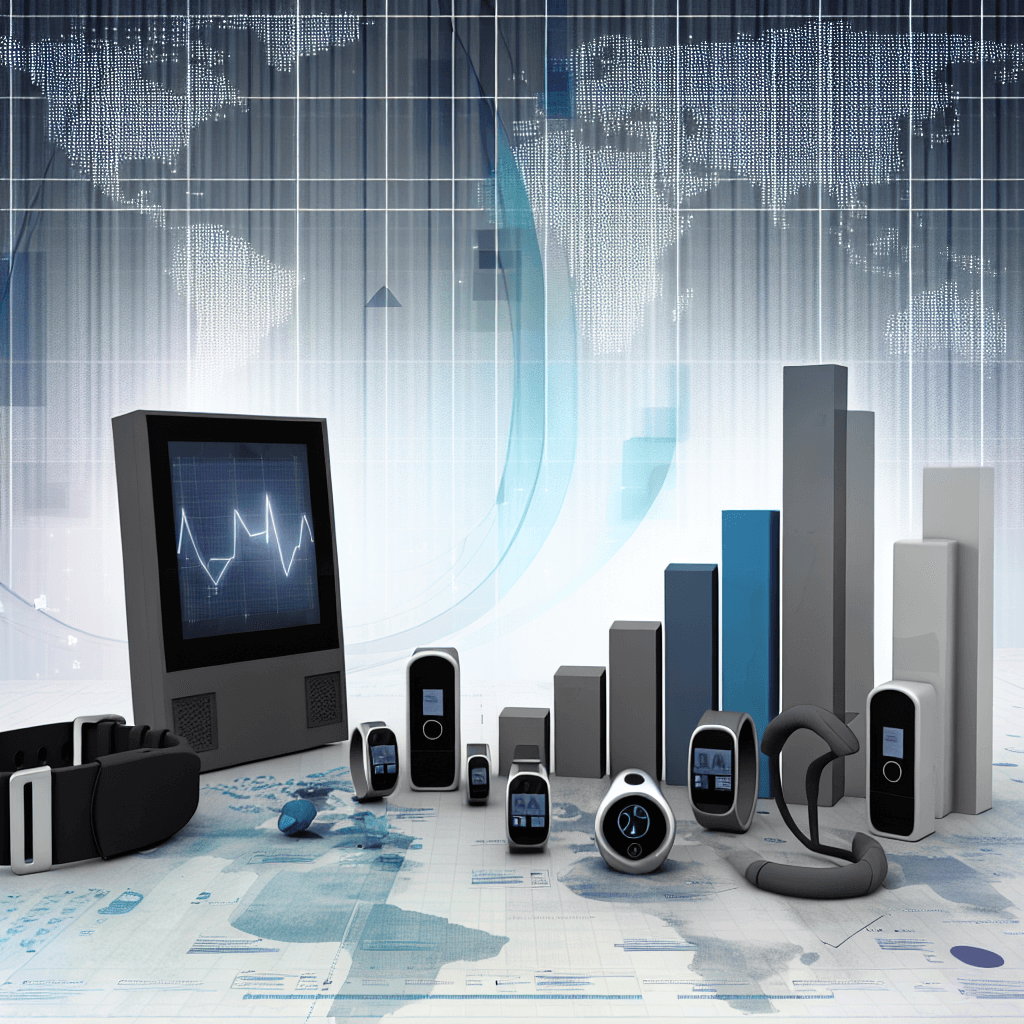Explore the Connected Health Device Market: trends, size, share, and forecasts. Get key insights and future projections.
Connected Health Device Market Size, Share, Trends & Forecast

Table of Contents
- Connected Health Device Market Size, Share, Trends & Forecast
- Understanding Connected Health Devices
- Current Market Size and Share
- Key Market Segments
- Emerging Trends in Connected Health Devices
- Regional Insights
- Case Studies: Success Stories in Connected Health
- Challenges and Barriers
- Market Forecast and Future Outlook
- Conclusion
Connected Health Device Market Size, Share, Trends & Forecast

The connected health device market is rapidly expanding as technology continues to evolve and integrate more deeply into the healthcare sector. This article explores the current market size, shares, trends, and provides a forecast for the future of connected health devices. By examining various segments, key players, and emerging technologies, we aim to provide a comprehensive overview of this dynamic industry.
Understanding Connected Health Devices
Connected health devices, also known as smart health devices, are tools and systems that use technology to monitor, inform, and manage health and wellness. These devices connect to the internet or other devices via different wireless protocols to share data and insights, enhancing patient care and health outcomes.
Current Market Size and Share
The global market for connected health devices has seen significant growth over the past few years. According to a report by Grand View Research, the market was valued at approximately USD 20 billion in 2020 and is expected to grow at a compound annual growth rate (CAGR) of 27.6% from 2021 to 2028. This growth is driven by increasing health awareness, technological advancements, and the rising prevalence of chronic diseases.
Key Market Segments
The connected health device market can be segmented based on product type, end-use, and region:
- Product Type: Includes wearable devices (fitness trackers, smartwatches), home monitoring devices (blood pressure monitors, glucose meters), and telemedicine devices.
- End-Use: Segmented into hospitals, clinics, home care settings, and others.
- Region: North America, Europe, Asia Pacific, Latin America, and Middle East & Africa.
Emerging Trends in Connected Health Devices
Several trends are shaping the future of the connected health device market:
- Integration of AI and Machine Learning: These technologies are being used to enhance the functionality of connected health devices, making them smarter and more predictive.
- Focus on Remote Patient Monitoring: Due to the COVID-19 pandemic, there has been a significant shift towards remote monitoring to reduce hospital visits and exposure.
- Increased Use of Wearable Technology: There is a growing consumer interest in health and fitness that is driving the demand for wearable health devices.
- Data Security and Privacy: As the use of connected health devices grows, so does the concern for data security and privacy. Companies are investing in secure data transmission and storage technologies.
Regional Insights
The North American region holds the largest share of the connected health device market, attributed to high healthcare expenditure, technological advancements, and the presence of major players in the region. Europe follows closely, driven by increasing health awareness and government initiatives towards digital health. The Asia Pacific region is expected to witness the fastest growth due to rising disposable incomes, increasing penetration of smartphones, and improving healthcare infrastructure.
Case Studies: Success Stories in Connected Health
Several companies and healthcare systems have successfully integrated connected health devices into their operations:
- Fitbit and Google: Fitbit, now owned by Google, has been at the forefront of integrating health data with electronic medical records to provide more cohesive patient care.
- Apple HealthKit: Apple’s HealthKit allows users to consolidate health data from various devices and apps into one platform, providing a comprehensive view of health that can be shared with healthcare providers.
- Ochsner Health System: This Louisiana-based health system uses connected health devices for chronic disease management, significantly reducing hospital admissions and improving patient outcomes.
Challenges and Barriers
Despite the promising growth, there are several challenges facing the connected health device market:
- Regulatory Issues: The healthcare industry is highly regulated, and products must undergo rigorous testing and approval processes, which can be time-consuming and costly.
- Data Privacy Concerns: With the increasing amount of health data being collected, there is a significant concern about how this data is used and protected.
- Integration with Existing Healthcare Systems: There can be significant challenges in integrating new technologies with existing healthcare IT systems.
Market Forecast and Future Outlook
Looking ahead, the connected health device market is poised for substantial growth. Innovations in IoT, AI, and data analytics are expected to drive further advancements in this field. By 2028, it is anticipated that the market will reach new heights, propelled by ongoing technological enhancements and increased adoption rates across various healthcare settings.
Conclusion
The connected health device market is transforming the way healthcare is delivered. With significant growth projected and continuous innovations on the horizon, this market is set to play a pivotal role in shaping the future of healthcare. Stakeholders in the healthcare industry should consider embracing these technologies to improve patient care and operational efficiencies. The journey of connected health devices is just beginning, and the potential for impact is immense.








